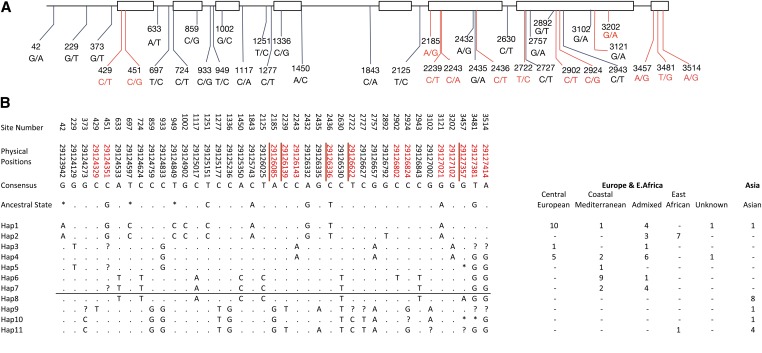Figure 5.
Structure of HvPpd-H1 (A) The eight exons in HvPpd-H1 are shown as white rectangles, and the 39 polymorphisms identified in exome capture sequencing for 78 donor parents and Rasmusson. Mutations resulting in a nonsynonymous amino acid change are depicted in red. (B) Haplotype alignment of HvPpd-H1 showing haplotypes private to Asia. Nucleotide positions for each segregating site are shown in the first row. The physical position of each of the SNPs in HvPpd-H1 which is located in linkage group 2H are shown in the second row. The third row has the consensus nucleotides for the alignment. Ancestral state for each SNP derived from Wheat are shown in the fourth row. Nucleotide state similar to consensus is shown as a point, missing data are represented with an asterisk and heterozygous genotypes set to missing are represented with a question mark. The black horizontal line separates haplotypes private to Asia (bottom) for those private to Europe and East Africa (top). The number in the right table indicate how many times the haplotype appears in each of the subpopulations. Mutations resulting in a nonsynonymous amino acid change are represented with the physical positions colored in red font.

